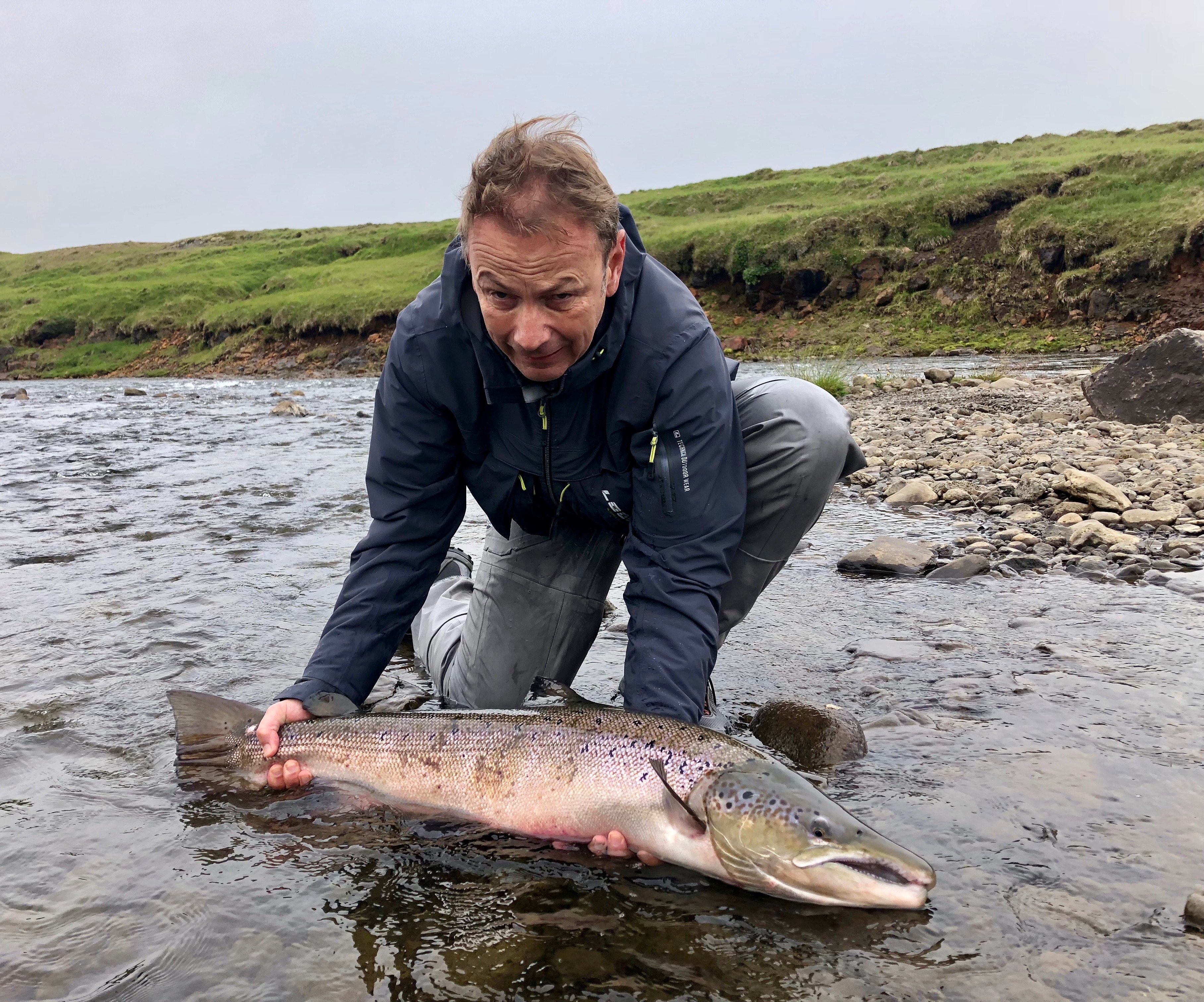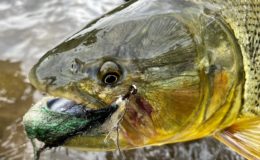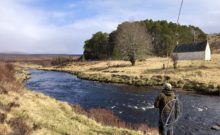It’s easy to get stuck within a single method of fishing. We become lazy about experimenting with different techniques because we lack the knowledge and the confidence that trying something different might work. All of us are guilty of a predominant approach to fishing for Salmon, it has worked so often before, why bother wasting precious time trying something new when we are confident that we have the answer? We are all vulnerable to a one method approach, which when it works we are vindicated with a fish, but we lack the curiosity and confidence to experiment and because of this self limiting philosophy, we fail to take maximum advantage of the opportunities staring right back at us. The following brief story has changed many aspects of my approach to fishing for Salmon.
This year salmon fishing in Iceland has been difficult. The rivers on the North West have suffered from very low rainfall and virtually no snow melt. We arrived to find the River Midfdjara as low as I can remember and prior weeks catch returns blew away the myth of Icelandic Salmon fishing being easy. The start of the season has been hard with fish in the river, but a combination of stale water and lower oxygen levels resulted in fish pretty much disinterested in anything that the Salmon anglers could put in front of them. This was going to be tough and frustrating especially as the pools held fish clearly visible to us, and us to them. The usual technique of fishing the hitch, or a very small wet fly wasn’t working, and the longer these fish sat waiting to shift, the more the pools resembled waiting rooms of lethargic and moribund fish unable to move up river. The river needed rain, it needed life and we all wanted to catch fish.
Finally by the second day some rain arrived. This wasn’t a deluge but an inch or two was enough to breathe life into the river, increase the flow, and encourage the salmon to look forwards and feel the cooler water through their gills. The conditions weren’t ideal, but there was a pulse to the river now and even the occasional smile from the Icelandic guides. To crack a joke would have been taking it too far.
There is a well known pool on the Midfjardara. Appropriately it’s name in translation is ‘Black Hammer’ which in two words conveys the true Viking imagery of an Icelandic wilderness. It’s a huge pool shielded on the far bank by a glistening mass of black ice scarred rock. Forbidding and ancient with a roaring torrent of water at the head of the pool, interspersed with submerged boulders the size of small cars who by their sheer size, create narrow channels, deep places where the Salmon rest and wait. There isn’t an obvious first approach to fishing this pool with any sense of control or strategy. This is a pool where you could bury your dead.
The noise of the water was deafening. Where do I start? I was fortunate to be fishing with Rafn ‘Rabi’ Alfreðsson as my guide, there can be few who know the river as well as Rabi, and without Rabi, there wouldn’t be this story. Lets try something different he said, let’s fish a super heavy upstream nymph. Hmm, I thought. If you have ever tried to cast a fly that has the weight of a small bomb, then you will know that emergency protective measures are required. Glasses as always, but baseball cap, and the vital wading jacket, hood up for added fly smacking on the back of your head protection. This isn’t sport, it’s an assault course. I joked that I might need a motorcycle helmet.
I lopped the fly twenty feet upstream into the foaming mass of barrelling water. The longer the lead upstream, the further the fly had to descent into the zone where we had assumed there could be a fish. Rabi had given me strict instructions. Cast up stream, immediately throw an upstream mend, track the fly line down then throw a downstream mend, pick up the slack, and watch the line for the slightest deviation. Easy I thought, except that the timing of trying to execute this cunning plan, is far shorter that I had imagined and I had 5 seconds to get this right before the fly was through the zone, or worse attached to the submerged rocks at the bottom of the pool. I still hasn’t seen any fish.
Next cast and the fly tracked into the channel. Rod tip down, slack line off the water, and me, hooded and hunched, watched the fly line tick along the surface when suddenly, for a split second, it stopped. Instinct took over, and I struck hard. All went quiet. Nothing moved, and then an explosion of anger, as a huge salmon rocketed up out of the pool, and started to make its way upstream. This is rare and often the sign of a bigger fish, up it went, fifty yards now upstream pushing on into the head of water its back clearly visible. Rabi whispered in my ear, ‘thats a big fish’ which made me tense even more…This was primitive stuff and now it turned and using the full force of the current pushing behind it, the fish drove back into the depths of the pool. Oh god, avoid that rock…rod held high, I managed to steer the fish away from the submerged depths and with each turn of its head, each thump of its tail, I was very aware of the split second shifts in weight and stunning power of the fish. Big fish behave differently. The movements are sudden, explosive and often final. Everything is tested to its limit, your knots, the strength of the tippet, the angle of the rod, the pace of the reel and most importantly the ability of the angler to actually land this immense creature without it careering off downstream, from pool to pool, pushed by the momentum of the water and the force of the journey. Finally, having steered the fish through two further pools downstream, and desperately trying to keep the required tension on the line I finally managed to steer the fish to the bank. Rabi grabbed its tail with two hands and we managed to subdue the fish and let it recover in a quiet part of the river. What a special creature. It recovered quickly, a couple of quick photos and he was put back into the river, and a split second later was arrowing back upstream.
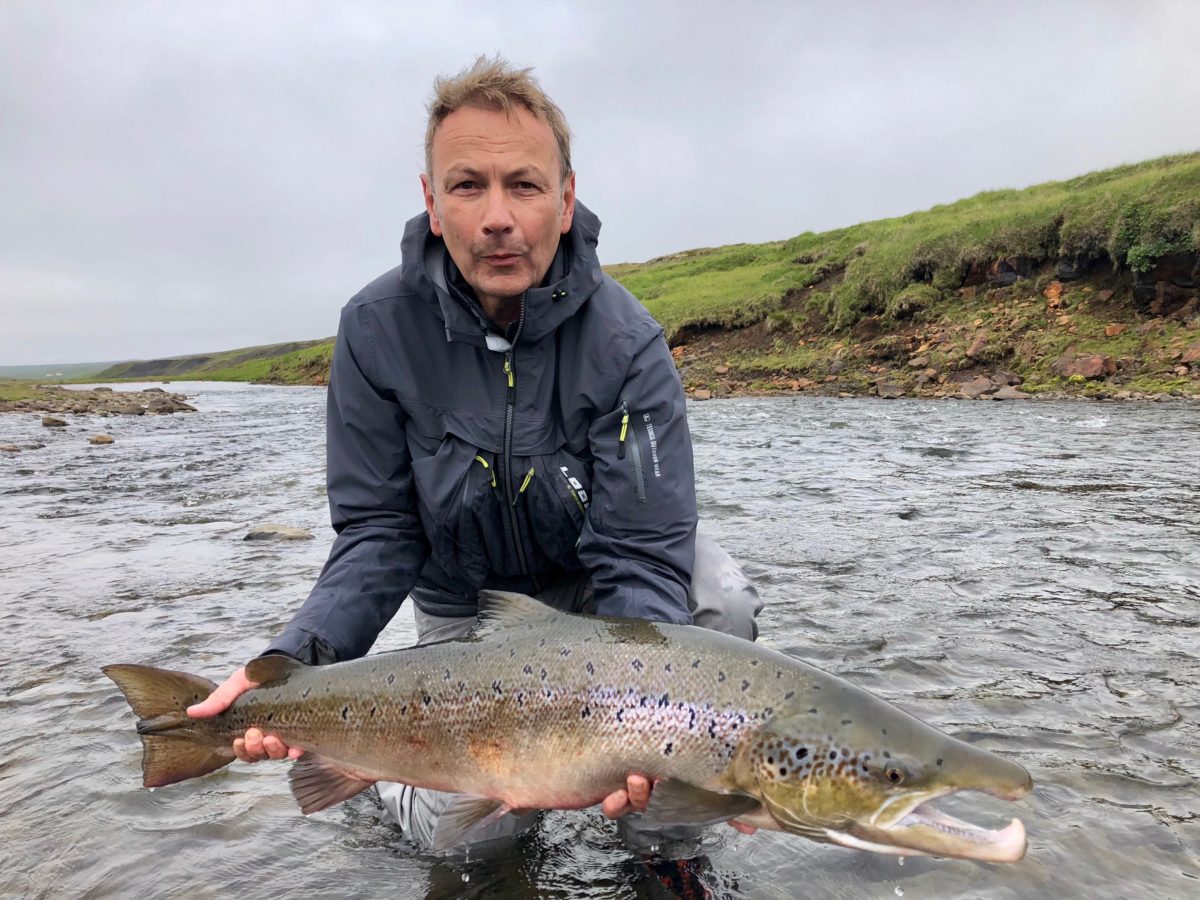
A huge 101 cms Icelandic Salmon
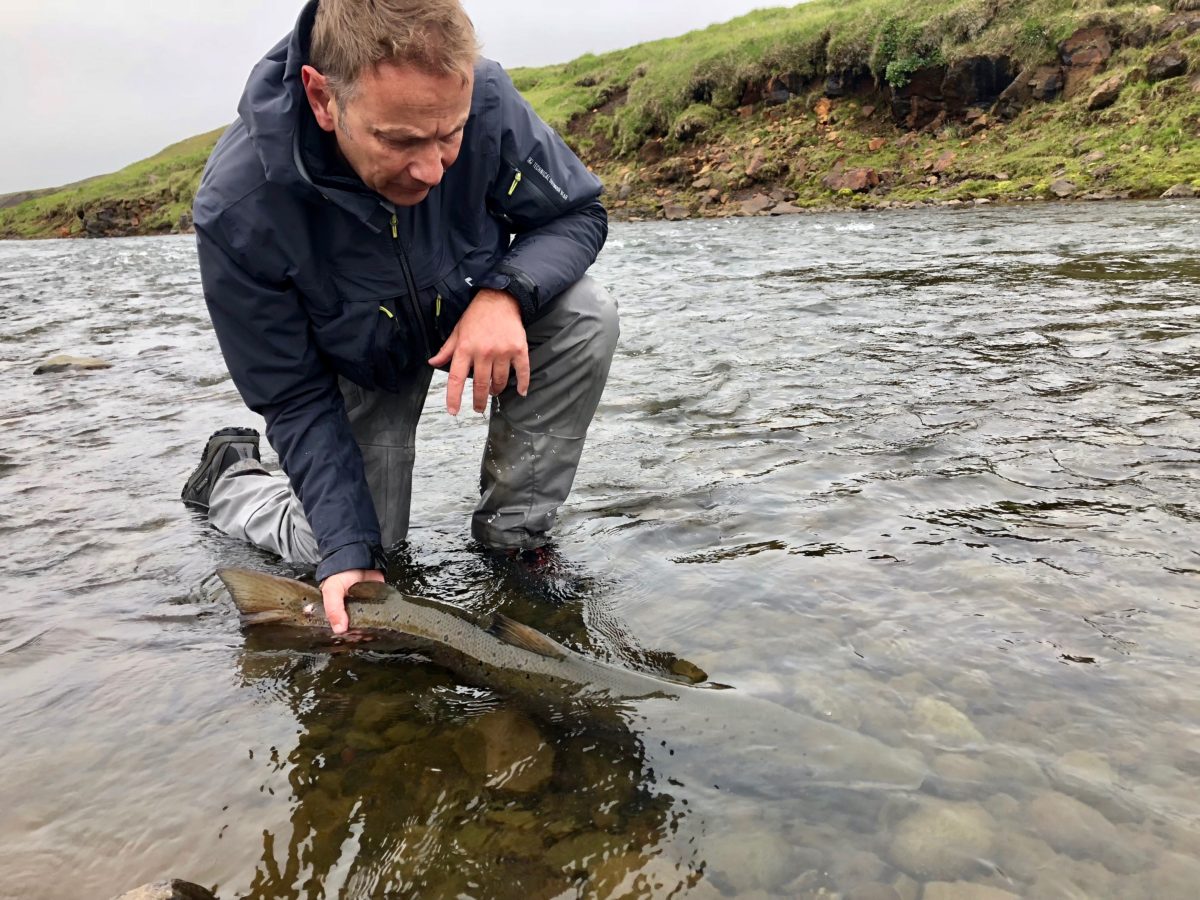
Safely returned
There can be few things so satisfying than a plan that comes together, especially when the plan wasn’t yours. Up stream deep nymphing for Salmon is not for everyone, but on those days when little else seems to work and something more radical is called for, then this technique should be added to the list. The skill lies with the guide and the instructions, but it does beat the ever constant and more traditional methods of across and down. Not sure what they’d say in Scotland.
